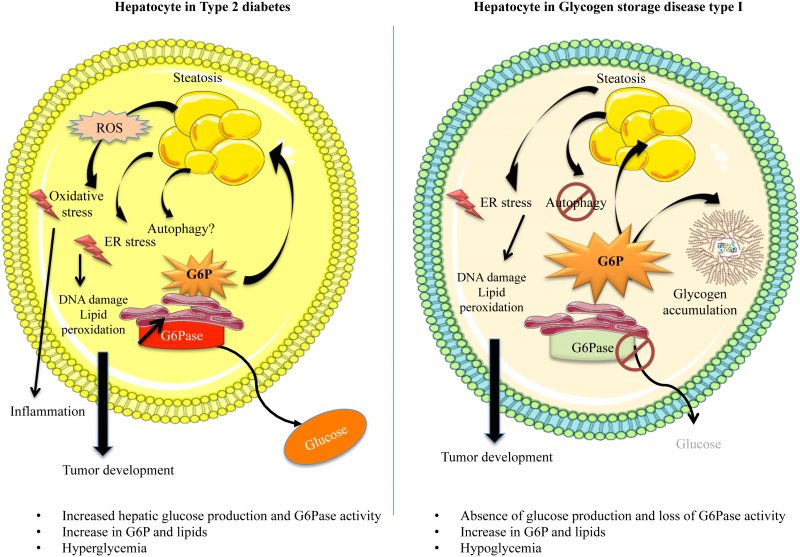Back to article: Hepatic stress associated with pathologies characterized by disturbed glucose production
FIGURE 2: Dysfunction of hepatocyte metabolism in type 2 diabetes and GSDI leads to cell stress. Type 2 diabetes is associated with hyperglycemia partially due to an overproduction of glucose by the liver, since G6Pase activity is increased, whereas GSDI is associated with hypoglycemia due to the absence of G6Pase activity. However, these two diseases share similar hepatic metabolism leading to the development of fatty liver. In type 2 diabetes, hyperglycemia leads to an increase of the metabolic flux downstream of G6P, whereas in GSDI, the absence of G6Pase activity is responsible for G6P accumulation. In both diseases, this results in an activation of de novo lipogenesis. In addition, GSDI is characterized by glycogen accumulation. These metabolic perturbations are responsible for cell stress such as ER stress. Even though mitochondrial dysfunctions were shown in both diseases, increased ROS production and oxidative stress has only been observed in diabetes, but not in GSDI. In GSDI, autophagy is also clearly decreased, but this is still controversial in diabetes. In both diabetes and GSDI, cell stress could cause DNA and protein damages, lipid peroxidation and finally, the development of hepatic tumors.

